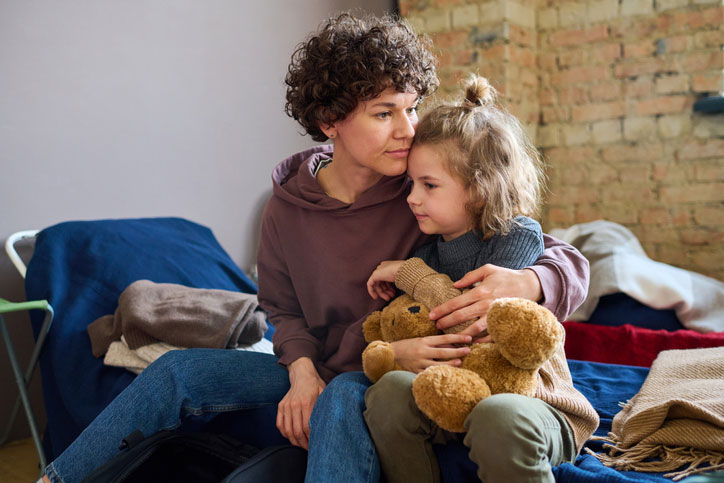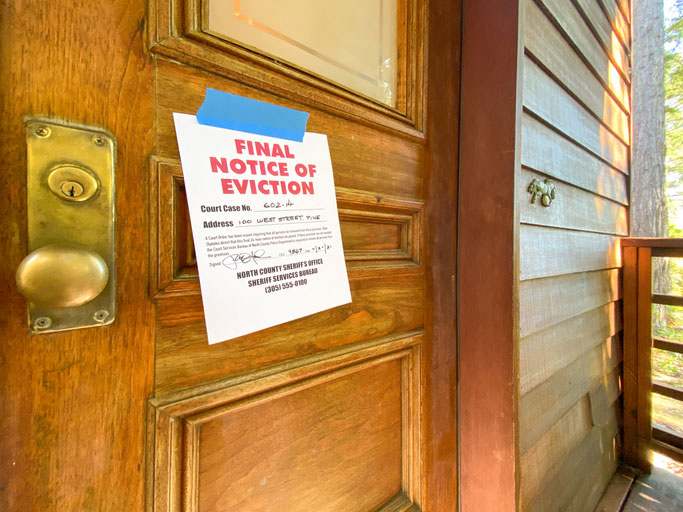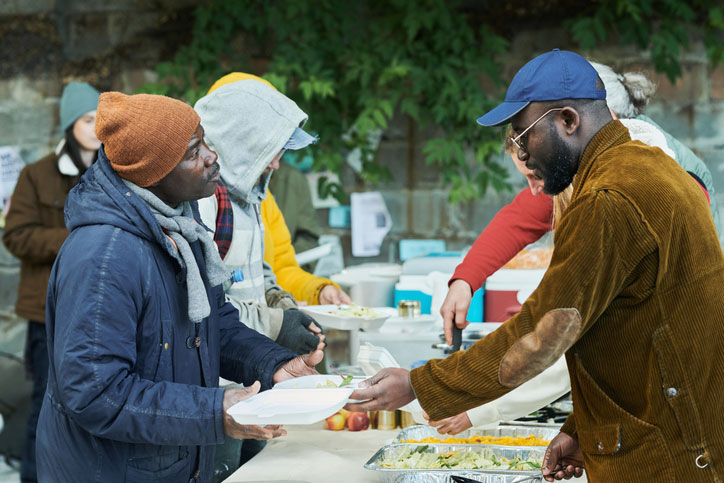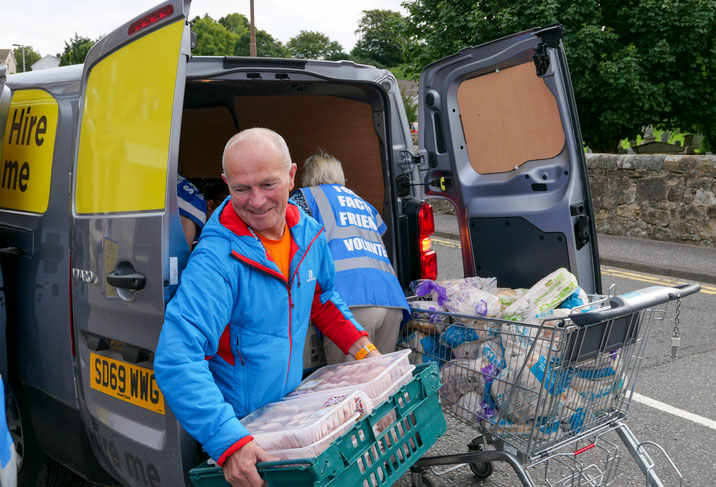Written by Scott Wilson

America’s growing unhoused population represents a massive failure in policy — and one of the great shortfalls of modern society.
In a nation of abundant wealth, it’s a travesty that around a half million Americans will go to sleep tonight on the streets in only a tent, a sleeping, bag, or sometimes just a cardboard box.
New York has the second highest population of unhoused individuals in the country.
According to the Department of Housing and Urban Development’s Annual Homelessness Assessment Report to Congress for 2023, more than 103,000 New Yorkers have no permanent housing. Almost 150,000 more are put up each night in temporary shelters. It’s the highest level of people without a place to stay at any point since the Great Depression.
Individuals experiencing homelessness are typically dragged through many other degrading and dangerous circumstances as a result. They are widely exposed to threats of violence and robbery, drugs, and disease. They are looked down on by authorities and often by fellow citizens.
Yet the population defies expectations from popular culture. Almost 70 percent of the population in shelters are families, including almost 50,000 children. More than ten percent of NYC school kids are among that number. More than half of adults who are unhoused experience mental illness.
All of them need help.
Social work roles in helping this population are filled by people who can look past the stigma and see the individuals who are hurting and deserve assistance and compassion.
How Do Social Workers Help the Homeless Population of New York?

Outreach is the major factor in the success of social workers dealing with unhoused populations. Stigmatization, untreated substance use and mental health issues, and often language barriers prevent many homeless individuals from seeking assistance on their own.
It’s up to social workers to connect with them and get them to the resources they need.
That role can take on many different forms. Some social workers go right for the jugular, focusing on getting eligible unhoused individuals and families into available shelters or housing. But there is never enough housing, so others concentrate on getting temporary services to those same people, making up for a lack of access to basics like plumbing, showers, food, and healthcare. Others still do what they can to make life on the streets more tolerable in small but meaningful ways… lining up tents, socks, toiletries, t-shirts, and blankets to hand out where needed.
Still other social workers focused on the homeless problem go toward the root causes at the highest levels of society. They tirelessly lobby for reform in areas like:
- Building codes and housing policy
- Legal codes covering vagrancy and loitering that criminalize homelessness
- Rent hike restrictions, eviction limitations, and rental rate hike prevention
Coming at the issues from all these angles means that social workers in these roles practice at all three of the characteristic levels of practice:
- Micro, or clinical social workers, requiring a license to offer direct therapy and intervention
- Mezzo social workers managing broader programs meant to address homelessness
- Macro social workers creating change in social systems and services to try to eliminate homelessness altogether
Learning the Social Work Skills That Help To Provide Assistance for the Unhoused

Naturally, the skillsets required in these very different aspects of social work that involve helping the homeless cut across various areas of expertise. Some of the big challenges include:
- Assessing a population that is by definition hard to find
- Conducting therapeutic services in non-traditional settings like soup kitchens, shelters, emergency rooms, and bus stations
- Developing consistency and stability in treatment
Case management is a skill that comes into play in a big way in helping the homeless. A study by NYU social work researchers in 2019 found that bureaucratic barriers were the major obstacle to people on the streets receiving shelter even when housing was available. The ability to fill out the right forms, make the right calls, and provide the right information can make all the difference for accessing assistance.
Crisis intervention is also a critical capability for many social workers dealing with unhoused populations.
Getting a BSW or MSW To Become a Social Worker in Homeless Assistance in New York
While homelessness is a huge problem in both the nation and in New York specifically, you won’t find any degree concentrations specific to the field. It’s so big that there really can’t be a particular focus—social workers draw on all kinds of tools and techniques from across the field to fight homelessness.
So almost any kind of Master of Social Work education can prepare you for roles working with New York’s homeless population.
There is a lot of overlap between homelessness and other social work fields such as substance use disorders, mental health issues, disabilities, youth and family, and immigration. You will find New York state schools offering specializations in each of those areas that may improve your skills in dealing with the unhoused.
According to SAMHSA, the Substance Abuse and Mental Health Services Administration, over 20 percent of individuals experiencing homelessness also have a serious mental health issue.
In other cases, being unhoused may be closely related to difficulty finding and holding jobs. So something like a Master of Social Work, World of Work specialization could deliver results in certain programs.
For many mezzo roles in homelessness social work, a Bachelor of Social Work degree will be all the qualification you need. It is also the best possible entry point to a fast-track Advanced Standing Master of Social Work program to level up your expertise.
MSW studies come with practicum and internship placements that will get you out on the streets and in direct touch with this population. Opportunities in government agencies such as the New York City Department of Homeless Services or with non-profits like Volunteers of America.
Both Government and Nonprofit Organizations Need To Fill Roles for Social Workers Helping Those Experiencing Homelessness

While dealing with the unhoused is largely the responsibility of government, many non-profit organizations have stepped up to the plate with outreach and a rainbow of assistance efforts aimed at helping people out of homelessness. Social work careers focusing on homeless services can find success in any of those wide-ranging areas of assistance.
Some of those organizations focus on one aspect or segment of the population with a hyper-focus that takes your specialization to new levels. That’s the case with VOA’s Operation Backpack, which focuses on getting school supplies into the hands of kids experiencing homelessness, or Human.nyc, which seeks to give voice to unhoused individuals by connecting them directly to elected officials and policy makers.
Others go full-spectrum on the problem, offering direct outreach services combined with advocacy efforts, like Coalition for the Homeless, which has food, crisis counseling, and housing services alongside extensive public advocacy efforts. These can draw on social work skills in micro, mezzo, and macro practice.
Of course, most social work aimed at unhoused populations is available with government agencies or their contractors. The NYC Department of Homeless Services is a heavyweight in this area not just in the state but nationally, given the high numbers of unhoused in NYC alone. From positions managing support programs to overseeing one-night counts and research efforts, these set the tone for society’s response to the homelessness problem.
No matter how you choose to become part of the solution to homelessness, an advanced degree in social work gives you the tools you need to be successful… and to make tonight someone’s last night sleeping on the streets.
